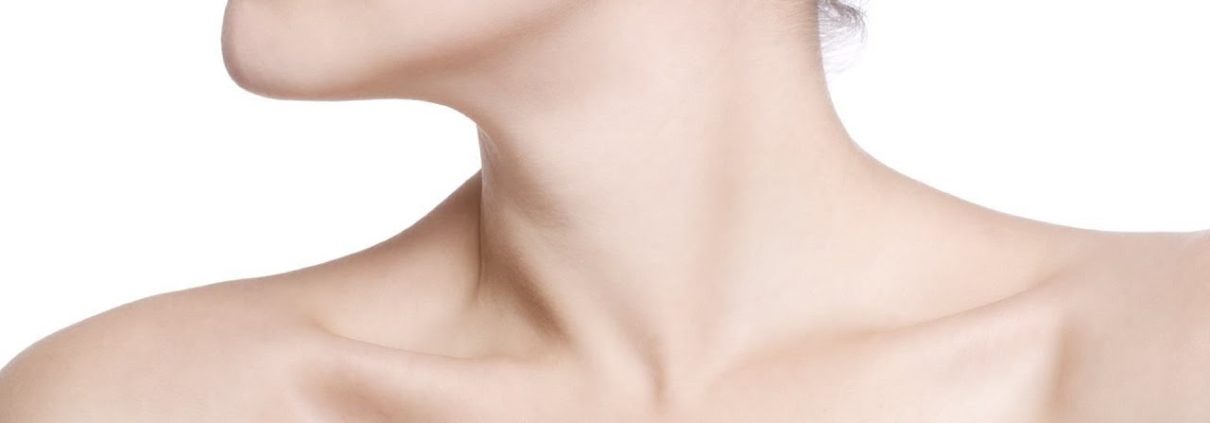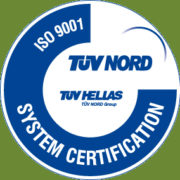THYROID NODULE
The thyroid gland is located in the anterior neck; it is a butterfly-shaped organ that is usually visible on inspection. It produces hormones, triiodothyronine (T3) and thyroxine (T4), which mostly controls how your body uses energy (metabolism). The thyroid is controlled by a gland located in the brain, the pituitary gland, which produces thyroid-stimulating hormone (TSH) to stimulate secretion of thyroid hormones (T4, T3). These two glands works together very closely and any functional thyroid disorder influences inversely the production of TSH.
Thyroid nodules are round or oval-shaped of thyroid tissue usually of different structure relative to the rest of the parenchyma. Thyroid nodules are common in the general population, especially in recent years thanks to the extensive use of ultrasound. The factors that can cause the creation of the nodules vary, while about 95% of them are benign.
DIAGNOSIS
There are different diagnostic tools that help determine whether a nodule is benign or cancerous and therefore to find the best treatment options (surgical removal, monitoring or other treatment). The diagnostic approach is not always the same for all patients.
If one or more nodules are detected during a physical examination (palpation) or during a carotid ultrasound (triplex), cervical CT/MRI scan in other cases, your doctor should refer you to an Endocrinologist for more specific examinations:
- All patients should undergo hormone test to evaluate thyroid function. In some patients, thyroid antibodies may also be required.
- Thyroid ultrasound to evaluate the dimensions and morphology of the nodule, the presence of other nodules, the parenchymal echotexture and the evaluation of the cervical lymph nodes.
- If there is no disorder in thyroid function, then, depending on the ultrasound and / or nodal size, as well as the individual and / or family history, it may require immediate puncture, under ultrasound guidance, to analyze the cells of the nodule.
If the hormone test shows hyperfunction (TSH production is at lower levels or suppressed) then we should do first a thyroid scintigraphy to see if it is a hot nodule (use of radiopharmaceuticals) or a cold nodule (without the use of radiopharmaceuticals). In the latter case, if most of the cold nodes are benign, a further investigation with a puncture is required for a cytology (see above). Hot nodules should not be punctured because it is rare to be cancerous.
– In case of hypothyroidism (abnormally high TSH levels) and if a patient needs a thyroxine replacement therapy, the investigation of nodules should be performed as thyroid function is normalized.
In some cases, the Endocrinologist may request calcitonin measurement, which is high in patients with a type of a thyroid cancer, a medullary thyroid carcinoma. Moderately elevated levels of calcitonin may also be detected in other benign thyroid diseases or other disorders, where a patient need a further investigation.
TREATMENT
In case of hyperfunctioning nodule/warm nodule the treatment may be done from the mouth to suppress a thyroid hormone synthesis, surgical removal or treatment with radioactive iodine. Choosing an appropriate treatment depends on the age of the patient, the characteristics of the nodule and the presence of other nodules, contraindications between various treatment methods, as well as the preferences of a patient.
If a puncture is necessary as a first choice or after a scintigraphy because the nodule is cold, the therapeutic approach depends on the results of the cytology test.
In some cases, the material is not sufficient for an exact cytologic evaluation and so a puncture procedure should be repeated.
- In a small percentage (10%) cytology provides unclear results, a so-called “gray zone” results. In this case, the therapeutic option may be surgical removal, repetitive puncture and / or close monitoring depending on the age of the patient, the presence of comorbidities as well as factors that increase suspicion of malignancy (clinical, ultrasound, individual and / or family history)
- In cases of benign cytology, the patient needs continuous monitoring of the nodule. If, over time, the characteristics of the nodule change, then it should be necessary to repeat the puncture. Nodules of a large size (> 3-4 cm), even if they are benign, especially with compressive symptoms on the throat, should be removed with a surgical intervention.
- The nodules that are cytologically malignant or suspected for malignancy require surgical intervention. In these cases, it is advisable before the surgery to check out the cervical lymph nodes using an ultrasound scan by an experienced radiologist, in order the surgeon to have all the required information. In some cases, post-operative care with the radioactive iodine may be necessary to counteract the remaining benign but also malignant cells in order to better monitor the patient.
It is important to know that a small percentage (about 5%) of all thyroid nodules are malignant and that thyroid cancer, in most cases, has high survival rates.
A brief description of thyroxine suppression therapy for the treatment of benign and cystic nodules. Nowadays, according to the latest global data, thyroxine suppression therapy is not recommended because it does not reduce all the nodules and if it reduces, the amount is not big enough to justify the use of the treatment which is maybe harmful (heart arrhythmia, osteoporosis) especially among older patients.
Cystic nodules, usually benign lesions of the thyroid parenchyma, need simple monitoring. However, it they are large and symptomatic, an evacuative puncture is carried out in the first stage. Unfortunately, most of the time they recur so the best treatment, excepting contraindications, is their surgical removal.




